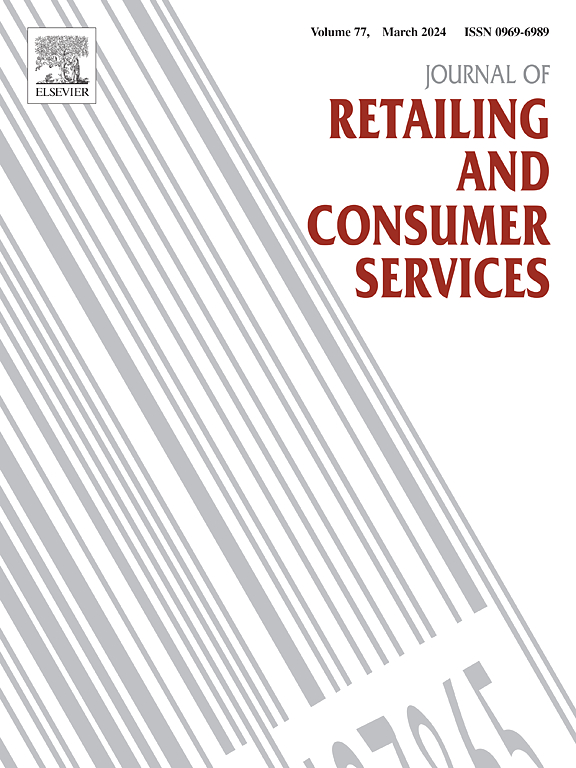Signaling cost to distributive fairness sensitive customers with price guarantee window
IF 11
1区 管理学
Q1 BUSINESS
Journal of Retailing and Consumer Services
Pub Date : 2025-03-13
DOI:10.1016/j.jretconser.2025.104284
引用次数: 0
Abstract
This study investigates the influence of consumers' distributive fairness(DF) perceptions on a firm's optimal price guarantee window (PGW) decisions and cost disclosure strategies. The intertemporal signaling game model is employed to analyze two disclosure strategies, namely Proactive Disclosure and Retained Information. We show that a high-cost firm has an incentive to mimic the PGW decisions of a low-cost firm to be perceived as low-cost by consumers, and vice versa, creating a bidirectional imitation phenomenon. Secondly, when consumers have weak perceptions of DF, the disclosure of cost information reduces the PGW of the low-cost firm, challenging the traditional view that transparency always requires a low-cost firm to bear more service expenses. Thirdly, in a pooling equilibrium, different levels of consumers' distributive fairness perceptions lead to cost-information disclosure having the opposite effect on the demand of the high-type firm in the first period. Finally, when consumers' DF perceptions are weak, disclosing product cost information benefits the low-cost firm over the high-cost firm, and vice versa, indicating that the strategic value of cost disclosure depends on the interplay between cost state and consumer perceptions. Our findings offer valuable insights for managers, emphasizing the importance of aligning price service and cost transparency strategies with consumer DF perceptions.
具有价格保证窗口的分配公平敏感用户的信号成本
本研究探讨了消费者分配公平观念对企业最优价格保证窗口决策和成本披露策略的影响。采用跨期信号博弈模型对主动披露和保留信息两种披露策略进行了分析。研究表明,高成本企业有动机模仿低成本企业的PGW决策,从而被消费者视为低成本企业,反之亦然,从而形成一种双向模仿现象。其次,当消费者对DF的认知较弱时,成本信息的披露降低了低成本企业的PGW,挑战了透明度总是要求低成本企业承担更多服务费用的传统观点。第三,在汇集均衡中,不同水平的消费者分配公平感知导致成本信息披露在第一阶段对高类型企业需求产生相反的影响。最后,当消费者的DF感知较弱时,披露产品成本信息有利于低成本企业,反之亦然,这表明成本披露的战略价值取决于成本状态和消费者感知之间的相互作用。我们的研究结果为管理者提供了有价值的见解,强调了将价格服务和成本透明度策略与消费者DF感知相结合的重要性。
本文章由计算机程序翻译,如有差异,请以英文原文为准。
求助全文
约1分钟内获得全文
求助全文
来源期刊
CiteScore
20.40
自引率
14.40%
发文量
340
审稿时长
20 days
期刊介绍:
The Journal of Retailing and Consumer Services is a prominent publication that serves as a platform for international and interdisciplinary research and discussions in the constantly evolving fields of retailing and services studies. With a specific emphasis on consumer behavior and policy and managerial decisions, the journal aims to foster contributions from academics encompassing diverse disciplines. The primary areas covered by the journal are:
Retailing and the sale of goods
The provision of consumer services, including transportation, tourism, and leisure.

 求助内容:
求助内容: 应助结果提醒方式:
应助结果提醒方式:


